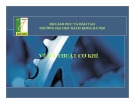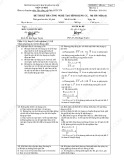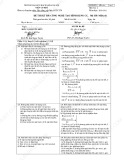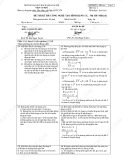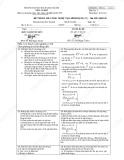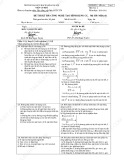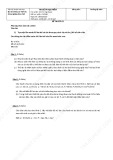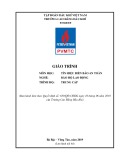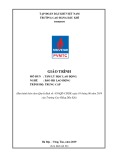
http://www.iaeme.com/IJMET/index.asp 1441 editor@iaeme.com
International Journal of Mechanical Engineering and Technology (IJMET)
Volume 10, Issue 03, March 2019, pp. 1441-1446. Article ID: IJMET_10_03_145
Available online at http://www.iaeme.com/ijmet/issues.asp?JType=IJMET&VType=10&IType=3
ISSN Print: 0976-6340 and ISSN Online: 0976-6359
© IAEME Publication Scopus Indexed
METHOD FOR EVALUATING THE
PERFORMANCE OF RADIO PATHS
Mirzaeva Malika Bakhadirovna
Department of Hardware and Software of Control Systems in Telecommunication, Tashkent
University of Information Technologies named after Muhammad
al-Khwarizmi, Tashkent, Uzbekistan
Malikova Nodira Turgunovna
Department of of Information Technologies, Tashkent University of Information
Technologies named after Muhammad al-Khwarizmi, Tashkent, Uzbekistan
Rakhimova Sayora Yashin qizi
Student of Computer Engineering Faculty, Tashkent University of Information Technologies
named after Muhammad al-Khwarizmi, Tashkent, Uzbekistan
ABSTRACT
A communication link with retransmission is proposed for assessing the reliability
of transmitted messages over composite (radio wired) communication lines. This solves
the problem of the feasibility of using a communication repeater.
Keyword head: Reliability of messages, efficiency of functioning, communication
repeater, probability of error
Cite this Article Mirzaeva Malika Bakhadirovna, Malikova Nodira Turgunovna and
Rakhimova Sayora Yashin qizi, Method for Evaluating the Performance of Radio Paths,
International Journal of Mechanical Engineering and Technology, 10(3), 2019, pp.
1441-1446.
http://www.iaeme.com/IJMET/issues.asp?JType=IJMET&VType=10&IType=3
1. INTRODUCTION
A communication system as a basic element of a communication system for controlling
stationary and mobile objects includes, as a rule, radio and wired channels organizing a
composite communication network. When information passes through composite networks, its
quality is determined by the characteristics of the channels that make up this network, their
physical and operational characteristics. One of the important characteristics of the quality of
functioning of communication networks is reliability, which characterizes the expected number
of erroneously received message symbols.





